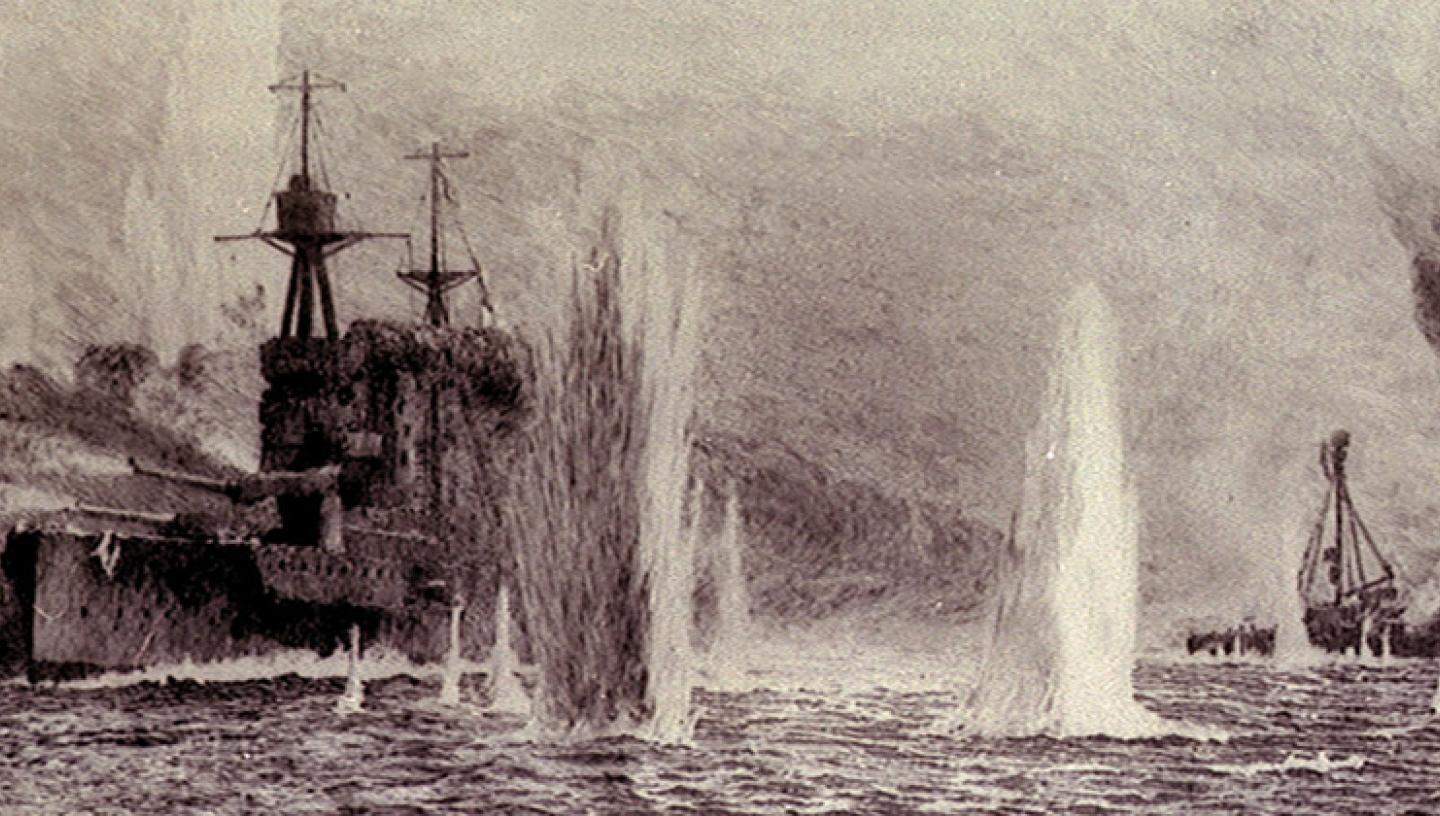
Essential Information
| Location | |
|---|---|
19 May 2016
The Battle of Jutland was an event of bewildering complexity. Archivist, Martin Salmon, tries to make sense of the day through personal accounts found within our archive.
Searching both the Library and Archive catalogues for ‘Jutland’, I was besieged with contemporary reports, eye witness accounts, gunnery track charts, diagrams showing the damage done to each ship in eye-watering detail and salvoes of reports, vindications and decisive new interpretations. Where to start?
Failing in my bid to get an overview of the bewildering complexity of the Battle of Jutland, I was drawn to an account of Sir Robert Arbuthnot. Arbuthnot led the 1st Cruiser squadron whose job was to patrol in advance of the main fleet of battleships under John Jellicoe, locate and make contact with the enemy, while the main fleet deployed to engage. Arbuthnot was a fanatical disciplinarian, a boxing champion with a penchant for sparring with his guests after dinner, seems to have taken Nelson’s ‘no captain can do very wrong if he lays his ship alongside that of an enemy’ all too literally. Seemingly forgetting all other considerations, Arbuthnot steered his ships straight for the enemy. This entailed a sharp turn to port and this hazardous manoeuvre almost caused a collision with Beatty’s flagship, Lion. Only two of Arbuthnot’s ships were immediately able to follow his lead, his flagship, the Defence and also the cruiser Warrior. These two quickly became targets of the approaching German ships whose combined guns destroyed the Defence and damaged the Warrior so badly she sank under tow the following day.
Another perspective on Arbuthnot’s action is provided by the diary of a Royal Marine, John Salmon of Rochester, Kent. His journal (JOD/244) on board the third ship in Arbuthnot’s line, the Duke of Edinburgh, reveals that the Duke of Edinburgh was not able to follow the Admiral because of the approach of Beatty’s battlecruisers. This naval traffic jam probably saved the lives of those on board, preventing the ship from sharing Arbuthnot’s fate.
…Our squadron flagship Defence had altered course to starboard followed by Warrior, had steamed through our battle cruisers line and was now going in opposite direction to us. The D of E should have followed on after her, but for the light cruiser Chester who steamed by us just as we were going to alter course she cut across our bows to get on our lea side and prevented us from altering our course….
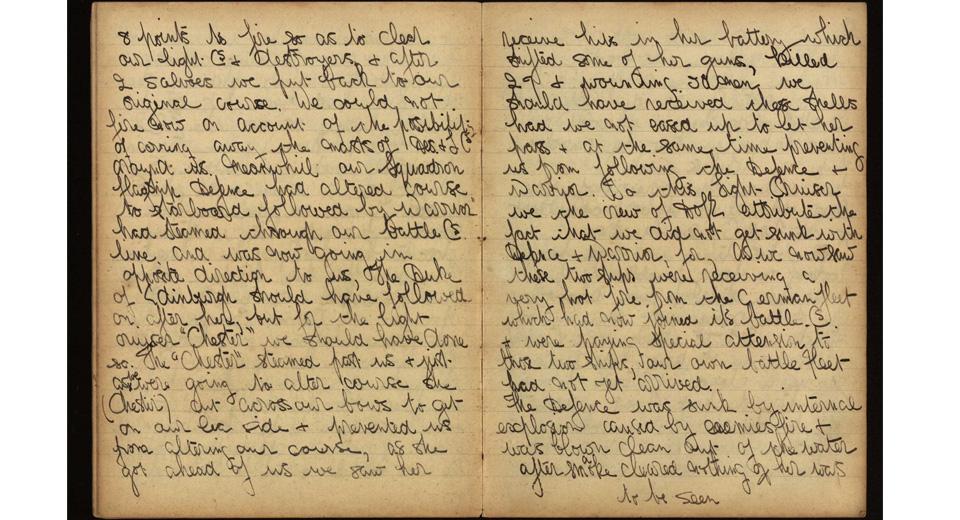
The arrival of Jellicoe’s ships meant the Duke of Edinburgh had to turn sharply to avoid colliding with the Chester. Yet moments later the Chester was hit where the Duke of Edinburgh would have been steaming, so for the second time in as many moments the Duke of Edinburgh escaped damage.
…as she got ahead of us we saw her receive hits…we should have received those shells had we not eased up to let her pass
From the Duke of Edinburgh, Salmon witnessed the destruction of the Defence …
… [the Defence] was blown clear out of the water after the smoke cleared nothing of her was to be seen … the Warrior was badly mauled and almost out of action. I afterwards heard that Warrior was taken in tow by another ship a hopeless wreck (she sank overnight). Here ended the career of Rear Admiral Sir Robert Arbuthnot and his first cruiser squadron.
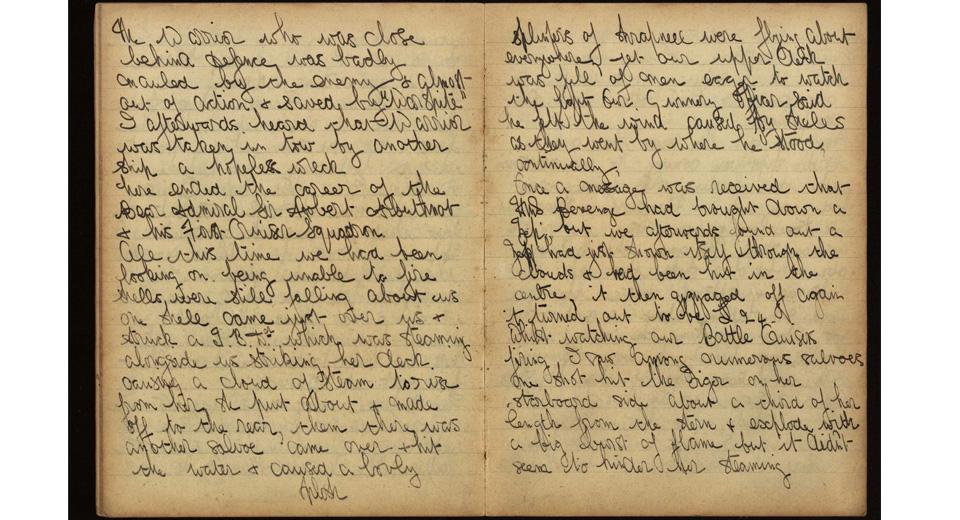
Sometime later the Germans mounted a torpedo attack, vividly described in the journal, and the Duke of Edinburgh swung sharply out of the way, escaping a torpedo which went on to heavily damage the battleship Marlborough. Escaping destruction at least 3 times in one day, the Duke of Edinburgh was one of the more fortunate ships in a day that saw over 20 ships lost.
In 2013 the Museum acquired the diaries of Sir Robert Arbuthnot and his wife, Lina Macleay. These diaries and papers cover Arbuthnot’s whole career. Lina’s diary for 1916 (ARB/3/31) makes sad reading as she read of her husband’s death in the newspapers.
31 May A big naval battle of the coast of Denmark, heavy losses on both sides and alas Robert went down in the Defence with all hands1 June I wrote a long letter to Robert…feeling rather tired…went for a stroll with Mother3 June Captain Hall soon confirmed this awful news and gave me no hope that Robert might be saved
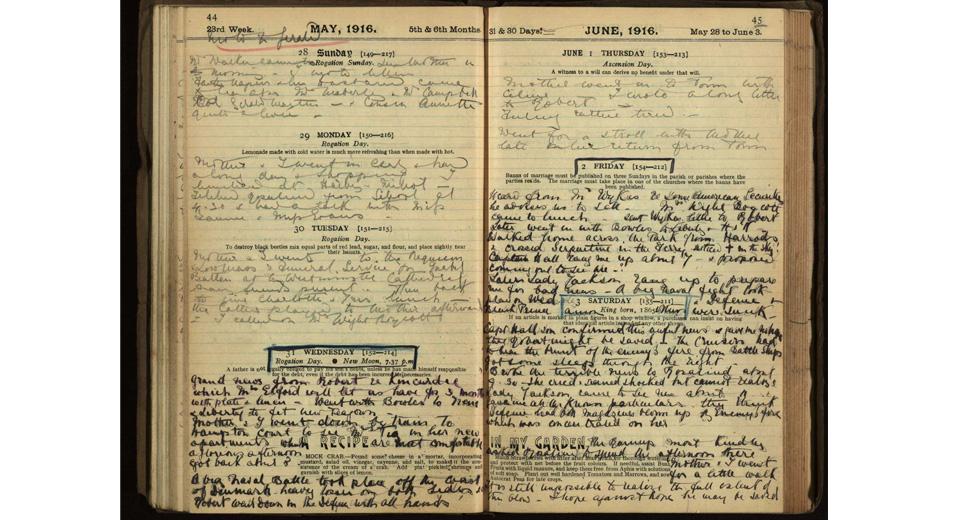
4 June Papers full of the grand naval battle which alas has had no decisive result… So far as is known not a single officer or man was saved from the Defence…5 June all were speaking of Robert’s magnificent action.
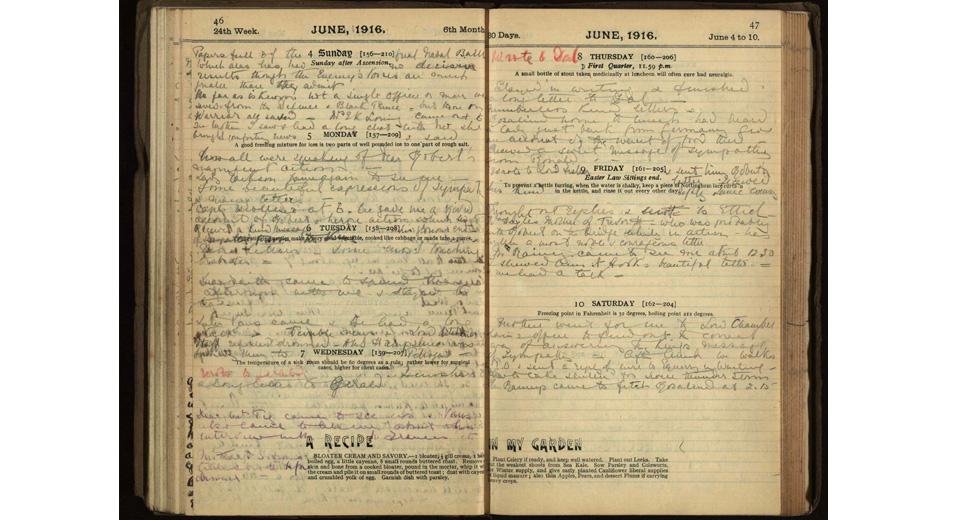
At the time, Arbuthnot’s death was reported as a heroic action but privately the loss of these two ships appeared to some as a rash failure of judgement or a thoughtless dash for glory. Lina Macleay had none of these details and the picture of what had occurred unfolded in agonising drip feed of information over the following days, as the death of her husband was confirmed.
These and many other perspectives on the Battle of Jutland are available to order through the online archive catalogue